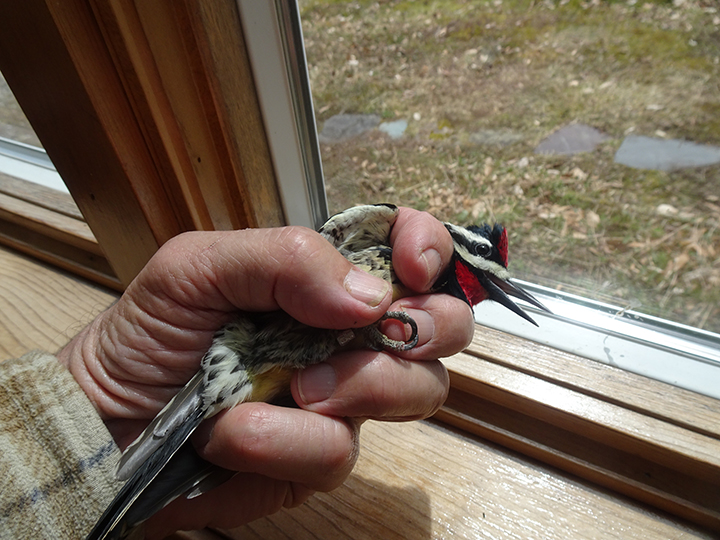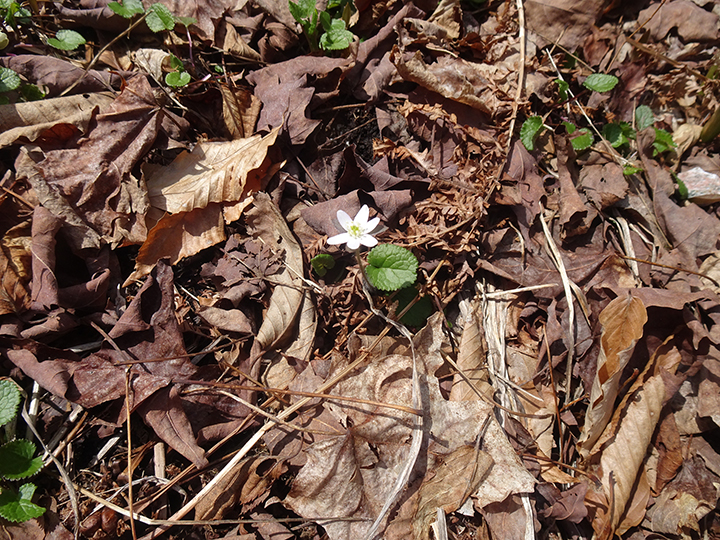
Outdoor Adventures with Gary Lee - Vol. 255
This is Earth Day 2024 and what I see outside isn’t a heavy frost that came overnight but light snow and twenty- two degrees on the thermometer. The bird bath is a frozen skating rink for the birds as it was also yesterday morning. High temperature yesterday was only 39 degrees, and the little birds were mobbing the feeders as they must have known what was coming.
I had a new bird at the feeder for this year yesterday, a Chipping Sparrow which went away with a band. The day before I saw three Northern Flickers on a lawn along the Limekiln Road feeding with two Robins. The day before that I had another new bird in the yard, a male, Yellow-Bellied Sapsucker as I heard it drumming. I caught it later that day and banded it. The next day I caught the female, and I heard them drumming this morning as I walked down to the pond. Lots of other little birds around the feeders, over fifty Pine Siskins, over 25 Purple Finch,10 Slate-colored Juncos and a few American Goldfinch. Those male Goldfinch are putting on their pretty yellow feathers and black head caps.
I watched the Common Ravens carrying nest material into the salt shed at the town barn. They probably have eggs in their nest by now as their young are out of the nest by Memorial Day. Another pair is nesting along 28 on the ledge just past Bald Mountain Pond. You can see the whitewash on the rocks below their nest. Both pairs have been using those nest sites for a few years now.
I’ve had several reports of Loons on the local lakes and I’ve yet to see one. I heard them calling over the hill on Limekiln Lake while I was picking birds from my nets this week. Some of the new Loon rafts have been put out by the Adirondack Center for Loon Conservation on Raquette Lake for the second year in a row. Only one was used as a second nest site last year but being in this early the others may get used this year. They have a wire cover that is covered with camo material to protect the Loon nests from Bald Eagles who will take eggs and newborn chicks from the nests. You may see some of these rafts on other lakes in this area as they look like little floating houses. Some may be marked with keep away signs, but others may not, so keep your distance so as not to disturb the nesting loons.
Some wildflowers were out earlier in the week. I saw lots of coltsfoot on the shoulders of the highways in full bloom. Then we had a hard frost, and they didn’t look so good the next day. Later in the week in a single hepatica flower in my garden and several spring beauties along the path to the pond. I think they all might be toast after last night at 22, time will tell. The herd of seven deer have been browsing on some of the wildflowers that are just coming up and some of the new tree seedlings that had started up from last year’s seeds.
Trees, as I looked across the pond over to the far ridge, had started to flower and put out leaves, especially the red maples making the all gray landscape turn red. Many of these trees start with their flowers right along with the leaves which might take a hit with this hard frost. Many birds and animals depend on these seeds and fruit from those flowers for their food. I haven’t seen any flowers on the beech and cherry trees yet, so maybe they will make it. Both of these trees are very important food sources for so many wild critters.
I know the bears are out because one was hit by a car on 28 down near Old Forge the other night and the bear won as the car had to be towed. I don’t know how the bear fared.
I had a comment on my column that the things that I report on floods, fires, hurricanes, high winds that I find on the internet have been happening for a long time but only the fast reporting of them has improved so we hear about them. Well Climate Change here on Earth Day is changing and causing many of the events to be one-hundred-year storms which are happening more than not. The oceans and lakes are warming, ice at the poles is less and less. Just saw a nice Zoom program from the Adirondack Center for Loon Conservation on Loons in Alaska by Tamara Zeller. All five species of Loons nest in the state of Alaska and the Yellow Billed Loon which is the most endangered by the warming of that area. Several of the bigger lakes that they nest on are being drained as the permafrost melts as this is the dam that holds the water. One day they are big lakes and the next day there is a hole in the permafrost, and they are mud flats. These Loons need these big lakes for nesting and feeding their young.
Full moon tomorrow night so maybe that will give us a warming trend, but that’s another story. See ya.
Above photo: Yellow-bellied Sapsucker-male
